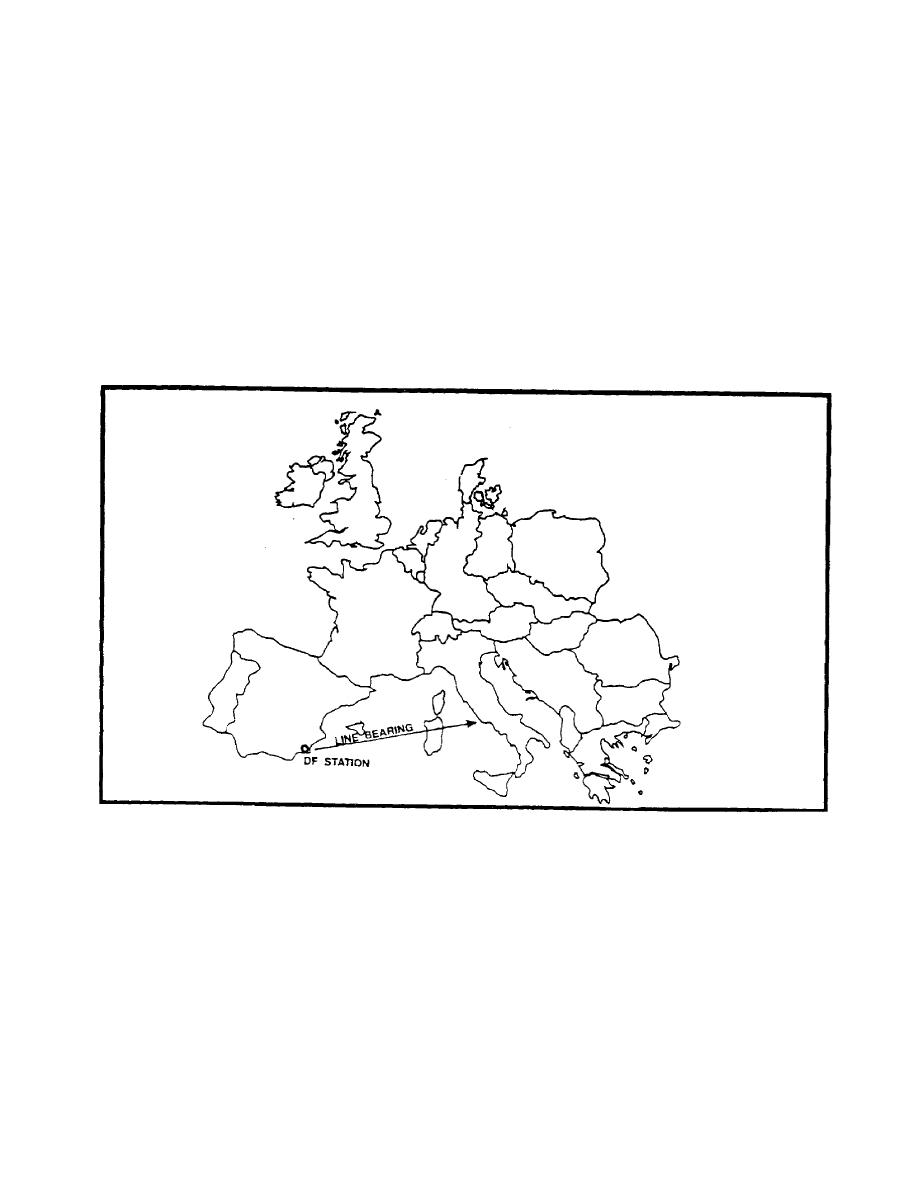
PART C: Elements
This is the basic theory of direction finding and the principle under which most direction
finding is "determining the horizontal angle of arrival of a radio wave with respect to a known
reference." The known reference is usually True North for strategic systems or Grid North for
tactical systems. The horizontal angle is specified because other radio problems involve the
vertical angle of arrival (how far to tilt the antenna for best reception) and arrival is specified
because we want to know where it is coming from, not where it is going.
The determination of the azimuth is made by determining the angle of arrival, then measuring
the angle between the point of arrival and the reference. This is called the azimuth or line of
bearing (LOB) and has many applications. It can tell the operator the approximate direction
to a transmitting antenna. If the direction finder is placed on a ship or aircraft, the vessel can
"home in" on the transmitter. (See Figure 1-19).
Figure 1-19. DF station line of bearing.
If we use two direction finders and take bearings with both at the same time we can locate a
transmitting antenna with limited accuracy. The intersection of two azimuths is called a CUT
and will provide the general location of the transmitting antenna. (See Figure 1-20).
IT0302
1-18



 Previous Page
Previous Page
